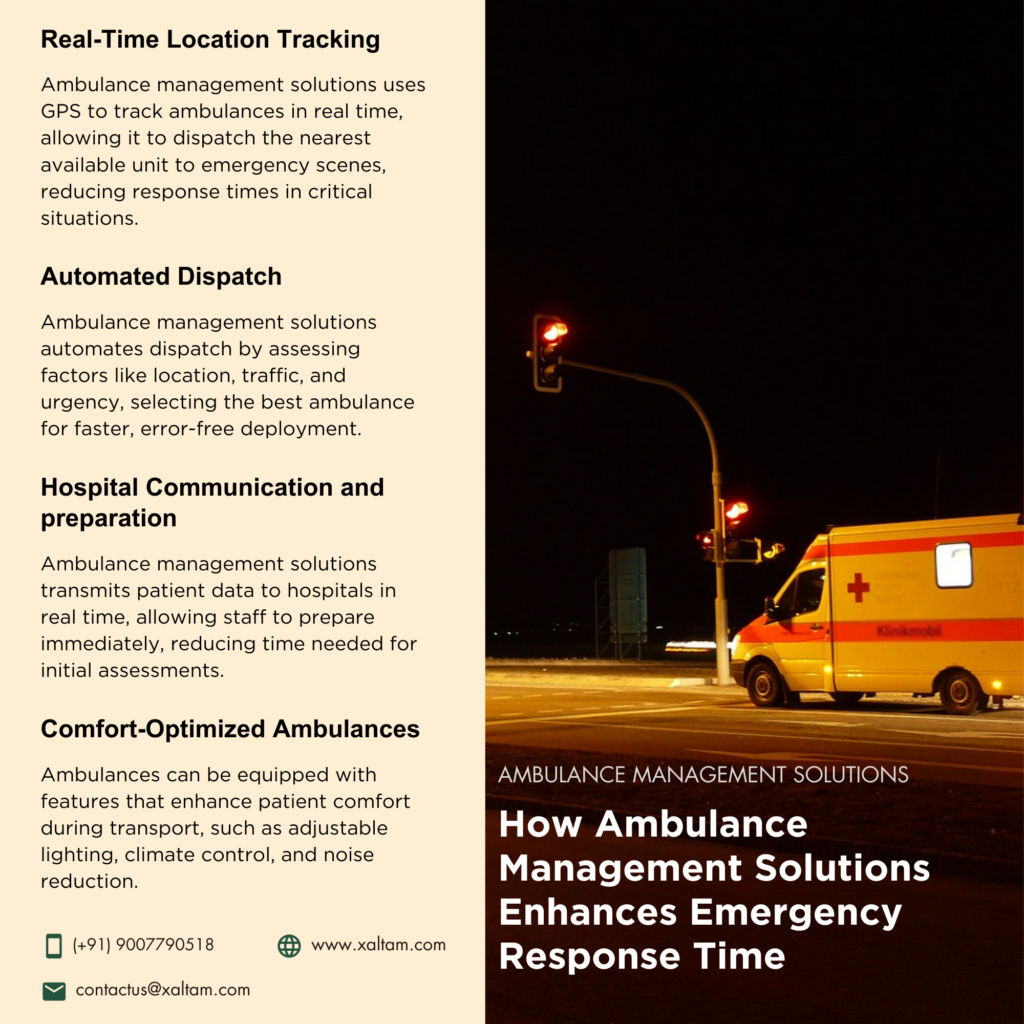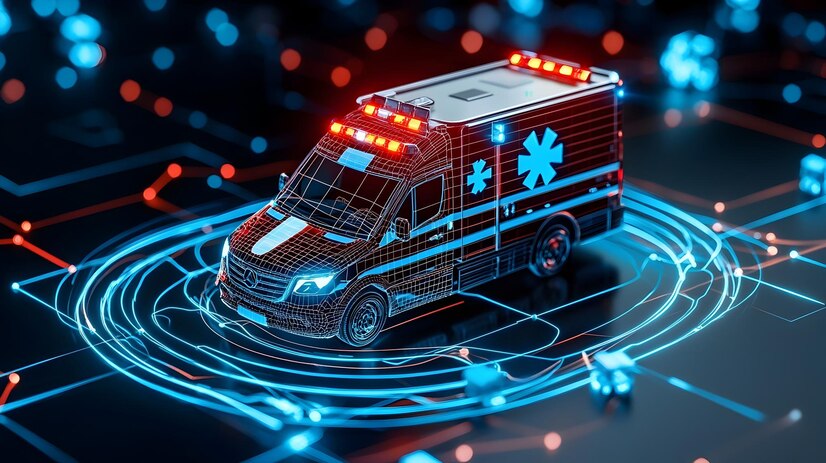With a primary focus on the effective deployment and management of ambulances, emergency response teams, and resources, an ambulance management system (AMS) is a specialized software platform designed to expedite emergency medical services (EMS) operations. To increase the overall effectiveness of emergency medical operations, AMS incorporates several technical tools, including the following:
- Data management
- Automatic dispatch
- Real-time tracking
- Communication technologies
Reducing response times, improving patient care, and guaranteeing efficient resource coordination in emergency scenarios are the main objectives of AMS.

To guarantee the best possible service delivery during emergencies, AMS is commonly utilized by emergency dispatch centres, ambulance service providers, and healthcare facilities. This helps to improve patient outcomes and save lives.
How AMS Enhances Emergency Response Time
- Real-Time Location Tracking:
AMS tracks every ambulance’s location in real time using GPS technology. The system can send the next available ambulance to the emergency scene by knowing where each ambulance is at any given time, greatly speeding up response times. This is particularly helpful in places where every minute matters, like busy cities or isolated areas. - Automated Dispatch:
By analyzing a number of variables, including location, traffic, ambulance availability, and situational urgency, AMS automates the dispatch process. The best ambulance can then be automatically chosen and sent to the scene by the system. This reduces the delay and potential human mistake associated with manual dispatching, assuring speedier deployment. - Optimized Routing:
The quickest and safest path to the emergency location can be determined and recommended by AMS using integrated mapping systems (like Google Maps or custom mapping software). In the event of traffic jams, accidents, or roadblocks, real-time traffic data enables dynamic rerouting, which helps ambulances arrive at the site faster and with fewer delays. - Hospital Communication and Preparation:
Through real-time transmission of vital signs and symptoms to the receiving hospital, AMS enables the medical staff to get ready before the ambulance arrives. As a result, less time will be spent on initial assessments after the patient arrives because the emergency department can begin triaging the patient and getting ready for treatment right away.
A useful instrument for improving emergency medical services, streamlining ambulance dispatch, and raising patient care standards is an ambulance management system (AMS). AMS decreases response times, guarantees efficient resource usage, and facilitates improved coordination between paramedics, dispatch centres, and hospitals by utilizing technology such as GPS tracking, automated dispatch, mobile applications, and data management.
An essential component of this system is the AMS mobile application, which gives paramedics access to real-time data, facilitates communication with other responders, and allows them to give patients prompt, well-informed care. These characteristics put AMS in a position to increase emergency medical services’ effectiveness, speed, and quality—thereby saving lives and improving patient outcomes.




